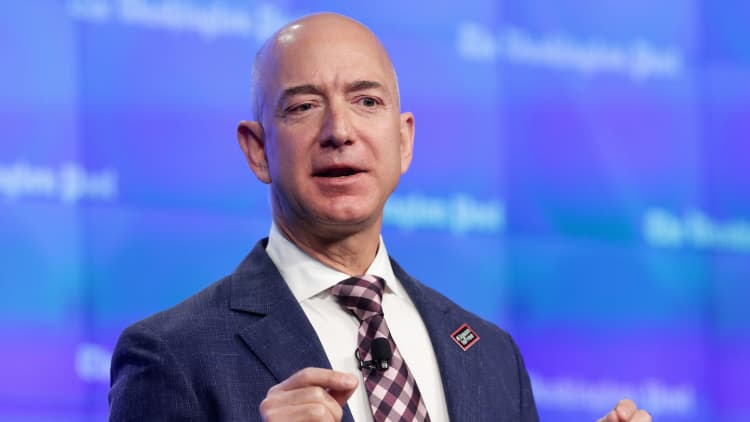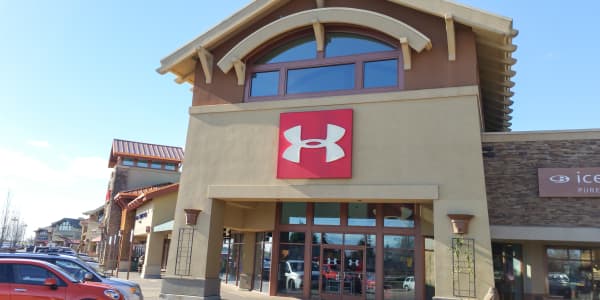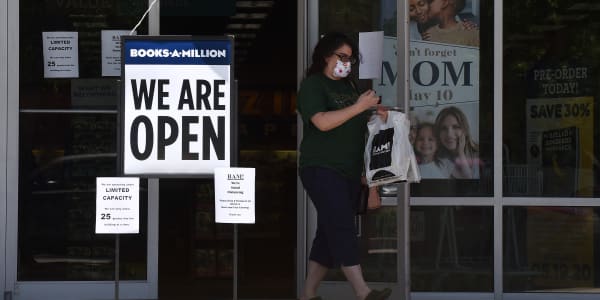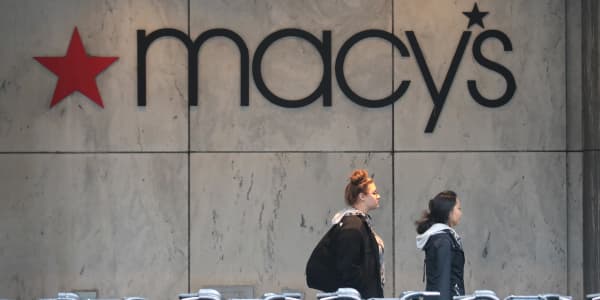Some see a huge miss when they look at Amazon's latest earnings report, but retailers see exactly why they're struggling to compete.
The internet giant is growing sales, but Amazon isn't worried about the bottom line as it continues to invest heavily in its many businesses. The investments are hurting profits, but they're also setting Amazon up for even bigger success, analysts say.
"Amazon is buying sales at the expense of the bottom line," said GlobalData Managing Director Neil Saunders in a research note. "In our view, this is a sustainable position both because Amazon is cash generative and is not losing money; nevertheless, it takes some of the shine off Amazon's success."
Amazon on Thursday reported second-quarter earnings per share of 40 cents, falling short of analysts' estimates of $1.42, according to Thomson Reuters' consensus estimates.
Total sales jumped 25 percent year-over-year, meaning Amazon brought in roughly $7.5 billion more in revenue during the second quarter of 2017 compared to a year ago, Saunders said. "This is an impressive performance — but it is doubly so for a company of the size and scale of Amazon."
Much of Amazon's efforts to double down in its investments are deliberate, and retailers should be warned if they're not already, he added.
"Amazon chooses to reinvest in its business and to sacrifice profits to boost its market share and dominance," Saunders said. On the other hand, a retailer like Wal-Mart made more net profit in a week than Amazon did during the entire quarter, he pointed out.
As Amazon's profitability is actually weakening instead of improving, the e-commerce behemoth is said to be "" The gap in sales has widened, over the past year, between Amazon and brick-and-mortar store-based retailers.
Retailers just can't compete, Stefan Weitz, an executive vice president of technology for Radial, told CNBC.
"No other retailer can come close to this kind of [profit] loss without a catastrophic result. ... Amazon's earnings report underlines why the company is accelerating — they're investing more money directly back into their business than any other retailer can afford," Weitz said.
Though Amazon Web Services remains the company's main growth driver, it's clear Amazon is making investments in growing its product offerings on Amazon.com, as evidenced by the latest Prime Day.
Meantime, Amazon is rolling out its own private-label brands in home goods, grocery and fashion. And with a Whole Foods acquisition in the works and expected to be completed before the year is over, Amazon is preparing to vastly expand its real-estate footprint.
"We are experimenting with a number of [physical] formats," CFO Brian Olsavsky said on Thursday's earnings conference call when asked about the success of Amazon's bookstores.
"You've seen the physical bookstores, and I would say that the benefit there is again ... it's also a great opportunity for people to touch and feel our devices and see them."
Olsavsky went on to say that Amazon is looking at rolling out different-sized stores, and the e-retailer now considers "revenue cost per square foot, just like any other physical retailer."
Just last week, the founder of home goods retailer Crate & Barrel, Gordon Segal, joined CNBC to say that Amazon was taking the "touch and feel" out of shopping. On Thursday's earnings conference call, Amazon executives used those exact words to describe the company's success thus far in physical retailing.
Amazon doesn't look to be slowing down its spending and expansion in key areas anytime soon.
CFO Olsavsky told analysts and investors Thursday that the company will "continue to invest in ... fulfillment capacity and logistics services, digital video ... not to mention Prime Now and AmazonFresh and Prime benefits."
Prime has grown to be a key part of Amazon's success. In combination with other subscription revenues, Amazon Prime fees brought the company roughly $2.2 billion of revenue this quarter, up 51 percent from one year ago.
Few retailers boast such extensive loyalty programs that tap into so many American homes as does Amazon Prime. Costco's annual membership is known for having high renewal ratings among those shoppers who start to use it. Target's Cartwheel Perks app and Redcard credit card have grown. And Starbucks' Starbucks Rewards program hands out gold stars in return for purchases, proving to be an enticing offer.
Still, the reach of these retailers' programs pales in comparison to Prime.
"The unfortunate truth for other retailers is that Amazon's growth and success will force them to reduce margins, especially if they want to grow in e-commerce," GlobalData Retail's Saunders said.
"While Amazon is comfortable operating with relatively low profitability, many other retailers — and their investors — are not. This is something that will create some significant pain points over the coming years."
WATCH: Amazon 'playing the long game'






